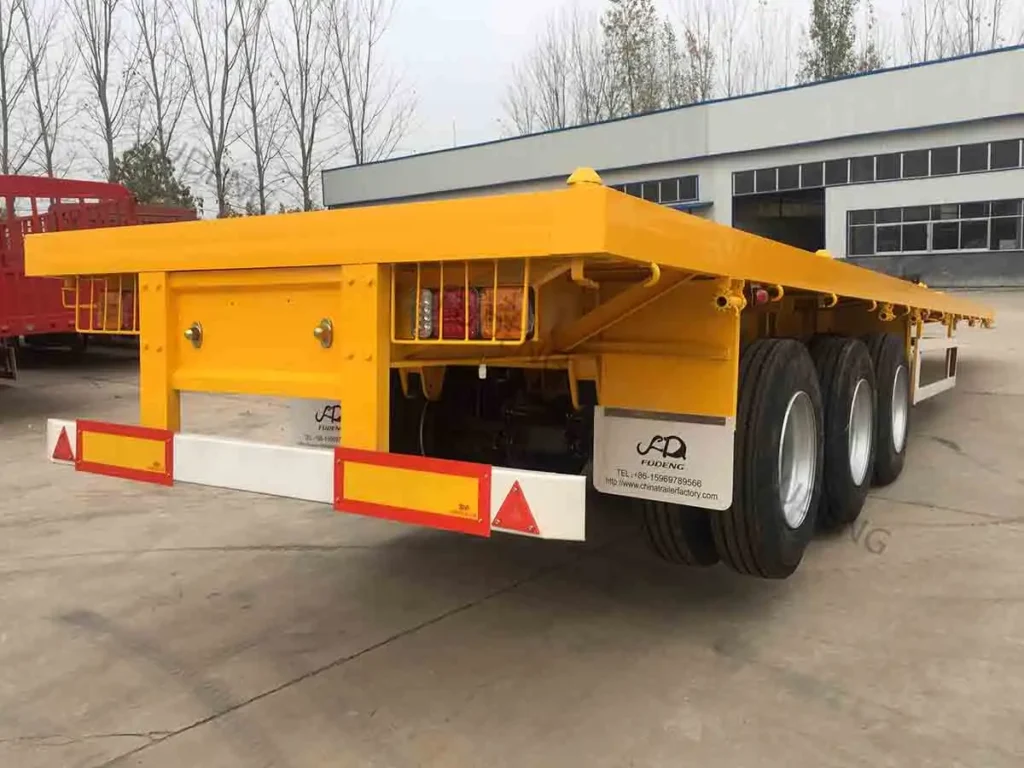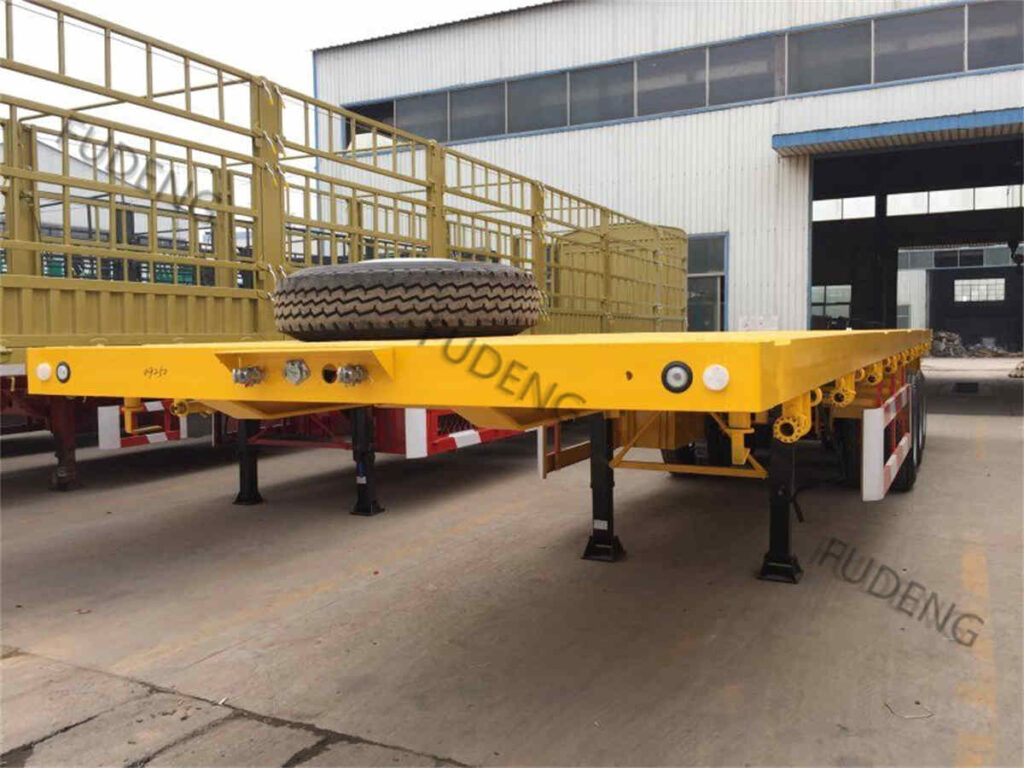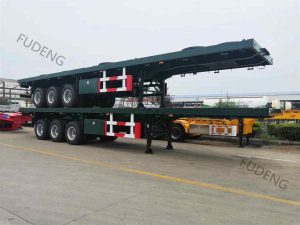Flatbed trailers are among the most versatile and widely used types of trailers in the transportation industry. They play a crucial role in the logistics sector, offering flexibility in carrying a wide variety of cargo types, from construction materials to machinery and oversized loads. In this guide, we’ll explore everything you need to know about flatbed trailers, including their key features, benefits, common uses, and how to choose the right one for your needs. Whether you’re a seasoned hauler or a business owner looking to optimize your transport operations, understanding the ins and outs of flatbed trailers can help you make informed decisions.
What Is a Flatbed Trailer?
A flatbed trailer is a type of trailer with an open platform and no sides or roof, allowing cargo to be loaded and unloaded from all angles. This design makes flatbed trailers particularly useful for transporting large, heavy, or awkwardly shaped items that wouldn’t fit into enclosed trailers. Flatbed trailers are widely used in industries such as construction, agriculture, manufacturing, and logistics.
Key Features of Flatbed Trailers
Open Deck Design: The defining feature of a flatbed trailer is its open deck, which provides maximum flexibility for loading and unloading. This design is ideal for oversized or irregularly shaped loads that cannot be transported in enclosed trailers.
Variety of Sizes: Flatbed trailers come in various sizes, typically ranging from 24 to 53 feet in length and 8.5 feet in width. The most common lengths are 48 feet and 53 feet, which offer ample space for large loads.
High Load Capacity: Flatbed trailers are built to handle heavy loads, with typical weight capacities ranging from 40,000 to 80,000 pounds. This makes them suitable for transporting heavy machinery, construction materials, and large equipment.
Versatility: Flatbed trailers are versatile and can be used to transport a wide range of goods, including steel coils, lumber, pipes, vehicles, and prefabricated structures.
Durable Construction: These trailers are typically made from high-strength steel or aluminum, ensuring they can withstand the rigors of heavy-duty transport. Some flatbed trailers also feature reinforced flooring to support extra-heavy loads.

Benefits of Using a Flatbed Trailer
Flexibility in Loading and Unloading: The open design of a flatbed trailer allows cargo to be loaded and unloaded from the sides, rear, or even from above using cranes. This flexibility is particularly beneficial for oversized or awkwardly shaped items.
Suitable for Oversized Loads: Flatbed trailers are ideal for transporting oversized loads that cannot fit into enclosed trailers. The lack of height and width restrictions allows for the transportation of tall or wide items.
Time-Efficient: The ability to load and unload cargo from any angle can significantly reduce the time it takes to prepare and transport loads. This efficiency can lead to faster turnaround times and increased productivity.
Cost-Effective: Because flatbed trailers can carry a wide range of cargo types, they can help reduce the need for multiple types of trailers, lowering overall transportation costs.
Accessibility: The open design means that flatbed trailers are easy to inspect for maintenance or safety checks, ensuring that they remain in good working condition for longer periods.
Common Uses of Flatbed Trailers
Flatbed trailers are used across various industries due to their versatility and capacity. Some of the most common uses include:
Construction Materials: Transporting large and heavy construction materials such as steel beams, lumber, concrete blocks, and scaffolding. The open design allows easy loading of long or bulky items.
Heavy Machinery: Moving heavy equipment like excavators, tractors, and cranes to and from construction sites. Flatbed trailers can accommodate the weight and size of these machines.
Vehicles: Shipping vehicles, including cars, trucks, and agricultural machinery. Flatbed trailers can be equipped with ramps to facilitate easy loading and unloading.
Containers: Transporting shipping containers, especially when moving them between ports, warehouses, and rail yards. Flatbed trailers can carry containers of various sizes securely.
Oversized Loads: Hauling oversized loads that exceed the dimensions of standard trailers, such as large pipes, wind turbine blades, or prefabricated structures.


How to Choose the Right Flatbed Trailer
When selecting a flatbed trailer, consider the following factors to ensure it meets your specific needs:
Load Capacity: Determine the maximum weight of the cargo you’ll be transporting and choose a trailer with an appropriate load capacity. Overloading a trailer can lead to safety hazards and potential fines.
Trailer Length and Width: Consider the dimensions of the cargo to ensure the trailer’s size is sufficient. For example, if you regularly transport long steel beams, a 53-foot trailer might be necessary.
Material: Flatbed trailers are typically made from steel or aluminum. Steel offers greater strength and durability, while aluminum is lighter and more resistant to corrosion. Choose the material based on your specific hauling needs and environment.
Special Features: Some flatbed trailers come with additional features such as extendable decks, side kits, or removable goosenecks, which can enhance their versatility. Consider whether these features are necessary for your operations.
Regulatory Compliance: Ensure the trailer complies with local and federal regulations regarding size, weight, and load limits. Compliance is crucial to avoid fines and ensure safe operation.
Towing Compatibility: Verify that your truck or tractor unit is compatible with the trailer, including hitch type, towing capacity, and any additional equipment required for safe towing.
Flatbed Trailer Safety Tips
To ensure safe and efficient transport when using a flatbed trailer, follow these key safety tips:
Secure the Load: Always use appropriate tie-downs, chains, or straps to secure the cargo. Ensure the load is evenly distributed and properly fastened to prevent shifting during transit.
Inspect the Trailer: Before each trip, inspect the trailer for any signs of wear, damage, or defects. Check the tires, brakes, lights, and suspension to ensure they are in good working condition.
Follow Weight Limits: Adhere to the weight limits specified for the trailer and towing vehicle. Overloading can cause tire blowouts, brake failure, and other safety issues.
Plan Your Route: When transporting oversized loads, plan your route to avoid low bridges, narrow roads, or other obstacles that could pose a hazard.
Drive Carefully: Flatbed trailers can be challenging to maneuver, especially when fully loaded. Drive cautiously, take wider turns, and maintain a safe following distance to prevent accidents.
Conclusion
A flatbed trailer is an invaluable tool for businesses involved in the transportation of large, heavy, or irregularly shaped cargo. Its open design, high load capacity, and versatility make it suitable for a wide range of industries, from construction to logistics. By understanding the key features, benefits, and safety considerations, you can choose the right flatbed trailer for your needs and ensure that your hauling operations are efficient, cost-effective, and safe.

